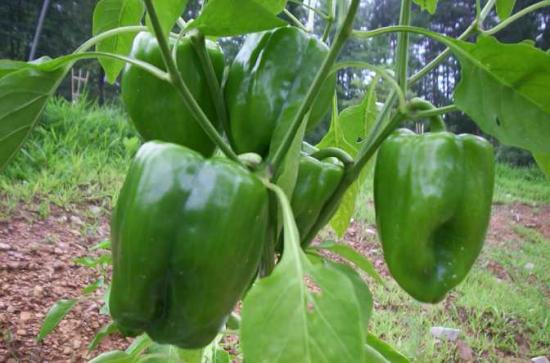 When growing sweet pepper, you need to take care of its full nutrition. It would seem that what’s complicated is that today gardeners have at their disposal a wide variety of fertilizers, ranging from well-known manure to chelating compounds.
When growing sweet pepper, you need to take care of its full nutrition. It would seem that what’s complicated is that today gardeners have at their disposal a wide variety of fertilizers, ranging from well-known manure to chelating compounds.
But many people try to grow vegetables without the use of "chemistry" or, using it to a minimum, prefer some natural harmless additives.
It is important to remember that the nutrition of peppers must be balanced, an overabundance, like a deficiency of any element, is harmful to the plant. So they seek various folk remedies, among which ordinary iodine should be noted. The first thought is for beginners: how can iodine, usually used for scratches and wounds, peppers, help? Meanwhile, iodine top dressing is very effective, with the minimum amount required. How and when to use iodine - our article will tell.
Content
Feeding peppers with iodine - description
This trace element is among the rare, although in nature it is found everywhere. The largest amount of iodine is in coastal zones, in water areas, since iodine is found in seaweed.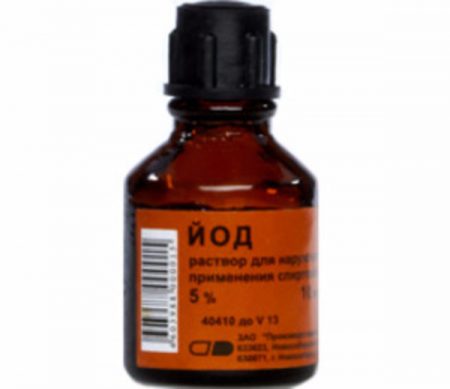
For plants, this element is not as important as nitrogen, but at the same time it is better to prevent iodine deficiency. It is proved that, subject to certain doses, iodine stimulates the growth of plants, affects the quality of fruits, their taste, and color saturation. Sweet pepper is a champion among vegetables by the amount of vitamin C in its fruits, namely iodine is “responsible” for the increase in this vitamin.
The presence of iodine is also a guarantee that such a necessary and important element for plants as nitrogen will be absorbed in full. Iodine deficiency affects the digestibility of nitrogen, peppers grow well, increase the number of ovaries, which generally affects the overall yield.
Gardeners usually use an alcoholic solution of iodine (5%), which is sold in pharmacies and serves as an antiseptic for disinfection and healing of wounds, cuts, and scratches.
Iodine is an important component in the synthesis of protein, while feeding, the fruits are also saturated with this trace element. By eating ripe sweet pepper fruits, a person can completely make up for the lack of iodine in the body.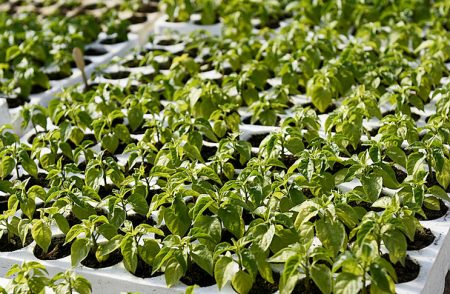
Iodine is not only an important component for a balanced nutrition of plants, it is also used to protect peppers from a variety of dangerous fungi and bacteria. It helps to increase the resistance of peppers to various infections, helps as a preventive as well as therapeutic agent for late blight.
How does iodine affect seedlings?
After listing all the advantages of using iodine, you need to understand when to use it. Solutions with this drug are used at all stages of growing peppers:
- for seed treatment before sowing (more potassium permanganate is used for this, but iodine can also be taken);
- for watering seedlings;
- for watering adult peppers in a greenhouse or in ridges;
- as an element of the composition for foliar top dressing (in the phase of flowering and fruiting of plants).
It turns out that iodine is needed for seeds, for seedlings and adult peppers, and it depends only on the gardener what kind of top dressing he will perform.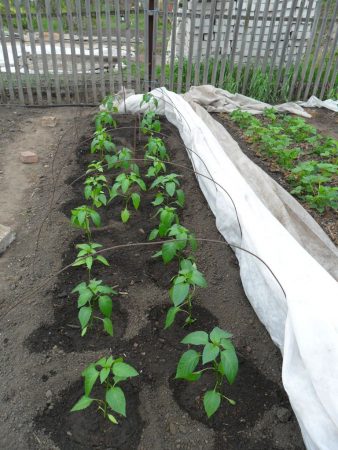
Peppers are "famous" for their slow germination, and it often happens that sprouts come out of the soil unevenly. To increase germination, iodine can be used:
- Dissolve a drop of the drug in a liter of water;
- mix the composition thoroughly;
- soak pepper seeds in this composition for about 2-3 hours.
By following this procedure, you can be sure that you will get friendly and strong sprouts of peppers. It is also useful to pour seedlings of this culture growing at home with iodine water, but this should be done only when 2-3 real leaves appear in plants.
The solution will already have a different concentration than when soaking the seeds: take a drop of iodine on a three-liter jar of clean water, mix, and then carefully seedlings are watered.
You can use a different composition: a drop of iodine, three liters of water and 50 grams of whey. Watering with such a solution helps to strengthen seedlings, good growth, and at the same time serve as a protection against various diseases.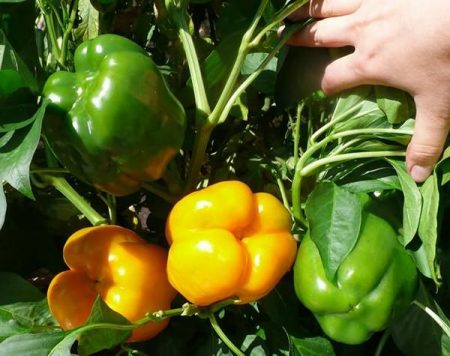
A good result for seedlings is given by the composition of iodine with the addition of phosphorus and potassium fertilizers. The proportions are as follows: a bucket of water will require 8-10 grams of iodine, the same amount of phosphate fertilizers and 20 grams of potassium supplements.
Adult peppers transplanted into greenhouses, hotbeds and ridges under the open sky respond well to iodine solutions.
It is enough to carry out a couple of watering at the root, you can also spray peppers with iodine solution once or twice a season. Peppers are usually watered with iodine at the very beginning of setting fruit brushes.
For watering, make such a solution: 3 drops of iodine are diluted in a bucket of water, watered under the root, the consumption for a plant is one liter. For spraying, the amount of iodine is 2 drops per bucket. The interval between treatments is two weeks. What does it give? The mass of fruits tied increases, the ripening period of pepper is reduced. For regions with short and not very warm summers, this is of particular importance, since the correct introduction of additives allows you to get more ripe fruits.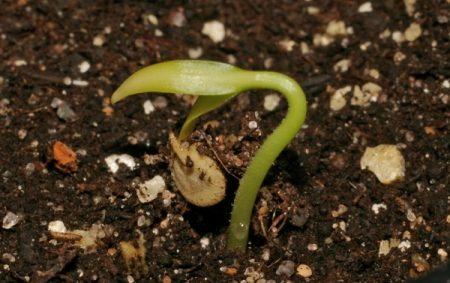
Many people use iodine spraying peppers, which helps to prevent the appearance of various diseases, including powdery mildew and late blight. The effectiveness of this technique is that you can simultaneously feed and prevent infections.
Solution Components:
- iodine (35-40 drops will be needed);
- a bucket of warm water;
- a liter of whey;
- hydrogen peroxide (tablespoon).
All components are thoroughly mixed, and then they are treated with pepper bushes. It is necessary that the composition falls on all sides of the leaves of plants, on branches, stems. When spraying, it is advisable to use sprayers with small nozzles so that the pepper wraps around a “cloud” of composition and the droplets are very small.
If the disease has suddenly “settled” on some plants, a solution with iodine is prepared promptly according to a different recipe.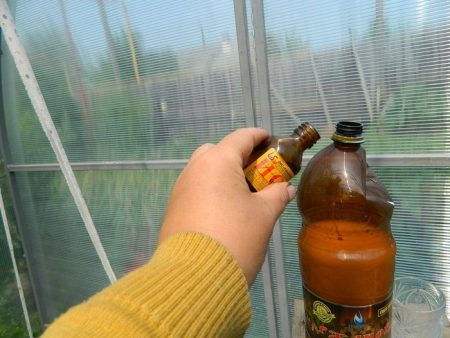
Components:
- bottle of iodine;
- 2 liters of wood ash;
- 8 liters of water;
- 10 grams of boric acid.
The water in the bucket must be brought to a boil, removed from the stove, then gently pour ash there. Everything is thoroughly mixed, and the composition is allowed to cool. After that, all iodine is poured there, boric acid is added, it is again mixed and insisted for a day. The infusion is used, diluting it with water in proportion: one liter of iodine-ash composition per bucket of water. Watered under the root.
The benefits of iodine-yeast top dressing
Iodine is available to everyone, especially for feeding and spraying requires a very small amount of the drug. Iodine, like yeast, attracts many gardeners not only for its accessibility, but also for its safety in use.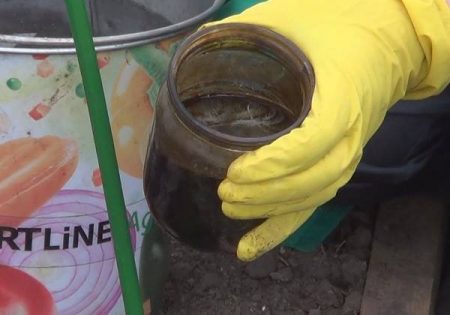
They are referred to as the so-called folk remedies, but in any case, the dosage of the components must be carefully observed.
Iodine compounds protect against diseases, contribute to improving the quality of fruits, accelerate their ripening. In combination with yeast top dressing, which is enough to hold once or twice a season, an excellent result is obtained without the use of mineral fertilizers. There is only one condition: proper use of organics, maintaining the balance of nutrients in all solutions.
Peppers that have received the correct “portion” of iodine or yeast have immunity, a strong root system develops, fruits form and ripen faster, and overall yield increases.
The rules for feeding pepper with iodine
Like any other top dressing, iodine formulations must be prepared immediately before use. Despite the harmlessness of iodine in small doses, it is still better to follow certain rules when processing peppers (especially in a greenhouse), do not forget about glasses and overalls.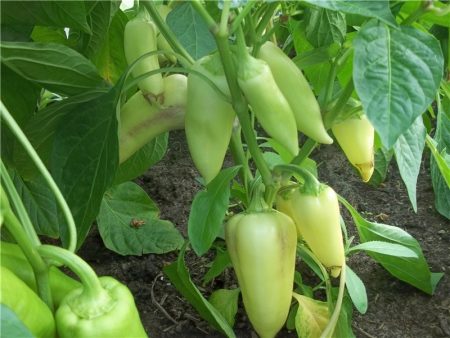
- When mixing the components, they take the exact amount of drugs without increasing the proportion. An excess of any substances is even more harmful than their deficiency.
- It is advisable to process peppers on leaves either early in the morning or in the evening. During the day, sunburn on the leaves during spraying may cause burns.
- For peppers growing in open ground, clear days without rains are chosen for processing.
- For the preparation of compositions, it is recommended to use special dishes, which are used only for dressing.
The correct use of folk remedies will allow you to get good harvests. The main thing is to carefully prepare the formulations, do not forget about the norms of fertilizers, as well as about the time when you need to process or "feed" the peppers.
Reviews
Arina, Nizhny Novgorod Region
From phytophthora on both peppers and tomatoes, I have a proven remedy. I knead 0.5 liters of kefir (although you can use any dairy product) in a slightly incomplete bucket of water, drip another 5-6 drops of iodine. Mix and spray my plants once every two weeks. As I plant in a greenhouse, I process it. I had no infection.
Ivan, Lipetsk region
I iodine watered many vegetables in the garden. I read a long time ago in the newspaper that it is a good fertilizer, and it saves me from diseases. I spray peppers and tomatoes, it helps from vertex rot, only in water I dilute milk except for iodine. I spray strawberries, apple trees, but water the cabbage and zucchini with an iodine compound. Heads of cabbage turn out good, and at zucchini in rainy weather young ovaries do not rot. So iodine is a sure remedy.




 Calorie pepper stuffed with meat and rice - BZHU per 100 grams
Calorie pepper stuffed with meat and rice - BZHU per 100 grams Gorky pepper - the best varieties for open ground
Gorky pepper - the best varieties for open ground Hot pepper seeds - the best varieties for open ground and reviews
Hot pepper seeds - the best varieties for open ground and reviews Capsicum tincture for hair - how to use and reviews
Capsicum tincture for hair - how to use and reviews